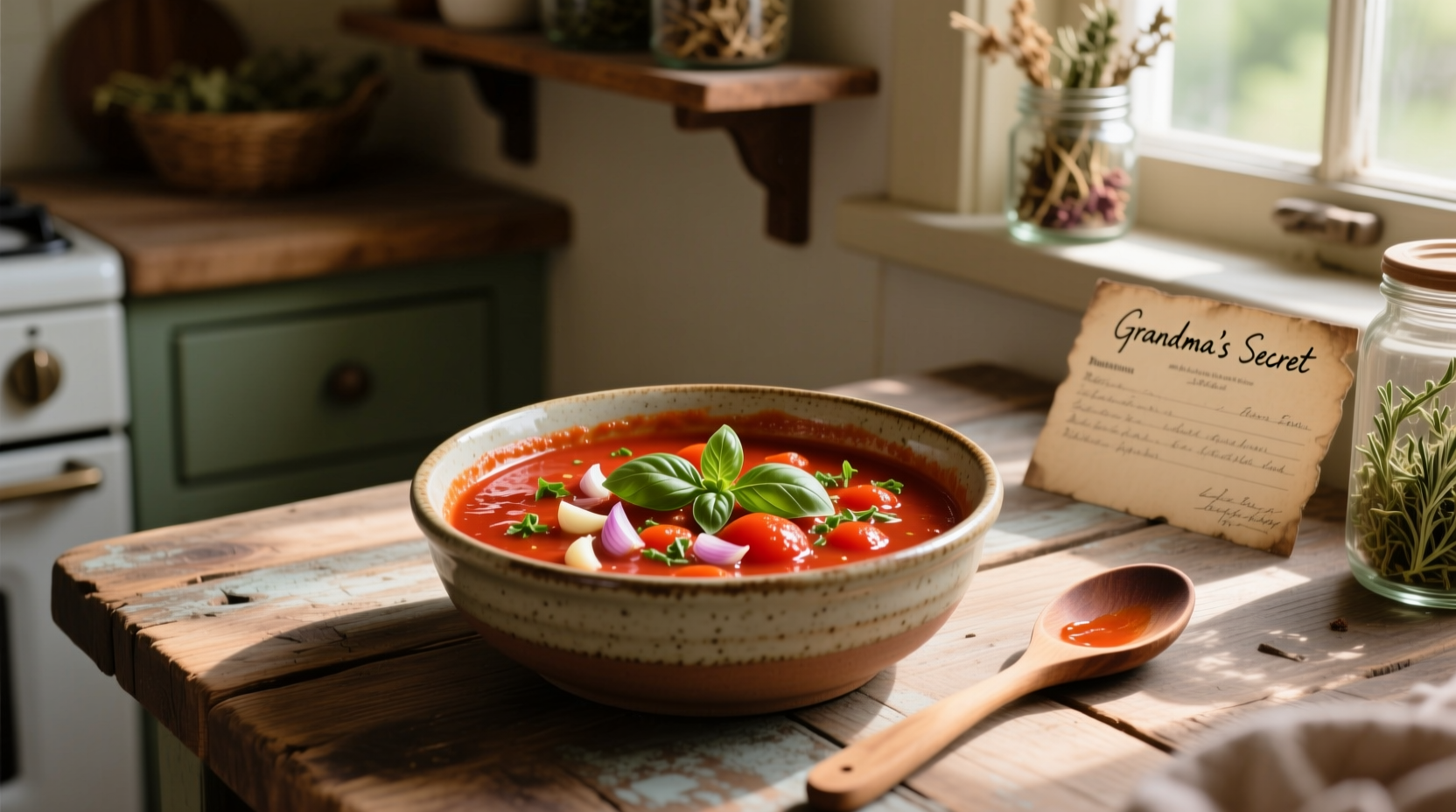Creating exceptional homemade tomato sauce with canned tomatoes is simpler than you think. Forget complicated techniques or hard-to-find ingredients—this approach leverages the consistent quality of canned tomatoes to produce a deeply flavorful sauce in under 30 minutes. Professional chefs often prefer canned tomatoes for sauce year-round because they're harvested and processed at peak ripeness, locking in flavor that fresh off-season tomatoes can't match.
Why Canned Tomatoes Outperform Fresh for Sauce
Many home cooks assume fresh tomatoes make superior sauce, but food science tells a different story. Canned tomatoes undergo thermal processing that breaks down cell walls, releasing enzymes that develop richer flavor compounds. The USDA food composition database confirms canned tomatoes maintain comparable nutrient levels to fresh while offering consistent acidity—critical for balanced sauce.
| Characteristic | Canned Tomatoes | Fresh Tomatoes |
|---|---|---|
| Flavor Consistency | Harvested at peak ripeness, processed within hours | Often picked unripe for shipping, inconsistent flavor |
| Acidity Level | Standardized (pH 4.3-4.9) for optimal sauce balance | Varies significantly by season and variety |
| Lycopene Availability | Increased 2.5x through thermal processing | Naturally lower, requires cooking to release |
| Year-Round Quality | Consistent performance in any season | Only reliable in peak summer months |
Essential Ingredients Breakdown
The magic of homemade tomato sauce with canned tomatoes lies in understanding each component's role. Skip generic "season to taste" instructions—know exactly why each element matters:
- Canned whole peeled tomatoes: San Marzano varieties (DOP-certified when possible) offer ideal sweetness-to-acidity balance. Their thicker flesh creates richer texture without excess liquid.
- Extra virgin olive oil: Use early-harvest oil for peppery notes that complement tomatoes. Avoid refined oils that lack flavor complexity.
- Garlic: Fresh cloves provide aromatic depth. Never use pre-minced—enzymatic browning creates off-flavors.
- Dried oregano: More stable flavor than fresh for cooked sauces. Add early to fully infuse the oil.
- Sugar: Only needed if tomatoes taste overly acidic. A pinch neutralizes without adding sweetness.
- Salt: Critical for flavor development. Add in stages—initial pinch when sautéing aromatics, final adjustment after cooking.
Step-by-Step Preparation Guide
Module 1: Smart Prep Work (5 minutes)
Proper preparation prevents common sauce failures. Drain canned tomatoes but keep the liquid—you'll control consistency later. Crush tomatoes by hand into a bowl; this preserves texture better than blenders which can make sauce watery. Mince garlic finely but don't let it brown prematurely.
Module 2: Flavor Foundation (15 minutes)

Heat 3 tablespoons olive oil over medium-low. Add garlic and oregano, stirring constantly for 60 seconds until fragrant but not colored. This extracts maximum flavor without bitterness. Pour in tomatoes with their liquid, add 1/4 teaspoon salt, and bring to gentle simmer. Never boil—high heat breaks down pectin, causing separation.
Module 3: Perfect Consistency (10 minutes)
Maintain bare simmer for 10 minutes, stirring occasionally. If sauce appears watery, remove lid to accelerate evaporation. For thicker sauce, mash some tomatoes against pot side with wooden spoon. The ideal texture coats the back of a spoon without running off immediately. Remember: sauce thickens slightly upon cooling.
Module 4: Final Flavor Adjustments
Taste after 10 minutes cooking. Need depth? Add 1 teaspoon tomato paste cooked in oil for 2 minutes first. Too acidic? Pinch of sugar or 1/4 teaspoon baking soda neutralizes perfectly. Bland? Another 1/8 teaspoon salt often works better than extra herbs. Always adjust seasoning after cooking—flavors concentrate as water evaporates.
Three Proven Variations for Different Uses
Master these simple modifications to transform your basic homemade tomato sauce with canned tomatoes:
- Pasta-perfect version: Add 1/4 cup reserved pasta water when combining with noodles. The starch creates emulsion that clings to shapes.
- Pizza-ready sauce: Simmer 5 minutes longer for thicker consistency. Omit sugar—pizza oven heat caramelizes natural tomato sugars.
- Meat sauce foundation: Brown 1/2 pound ground meat first, then proceed with recipe. The rendered fat enhances flavor absorption.
Troubleshooting Common Sauce Problems
Fix these issues without starting over:
- Too thin: Simmer uncovered 5-7 minutes. Never use thickeners—they alter texture.
- Too acidic: Pinch of sugar or 1/4 teaspoon baking soda. Add gradually while tasting.
- Bland flavor: Underseasoned is most common cause. Add salt in 1/8 teaspoon increments.
- Bitter notes: Garlic burned during sauté. Start over—bitterness can't be removed.
Storage and Usage Tips
Your homemade tomato sauce with canned tomatoes keeps refrigerated for 5 days or frozen 6 months. For best results, cool completely before storing. When reheating, add a splash of water to restore consistency. Professional kitchens always under-salt sauce initially—flavors intensify during storage.











 浙公网安备
33010002000092号
浙公网安备
33010002000092号 浙B2-20120091-4
浙B2-20120091-4